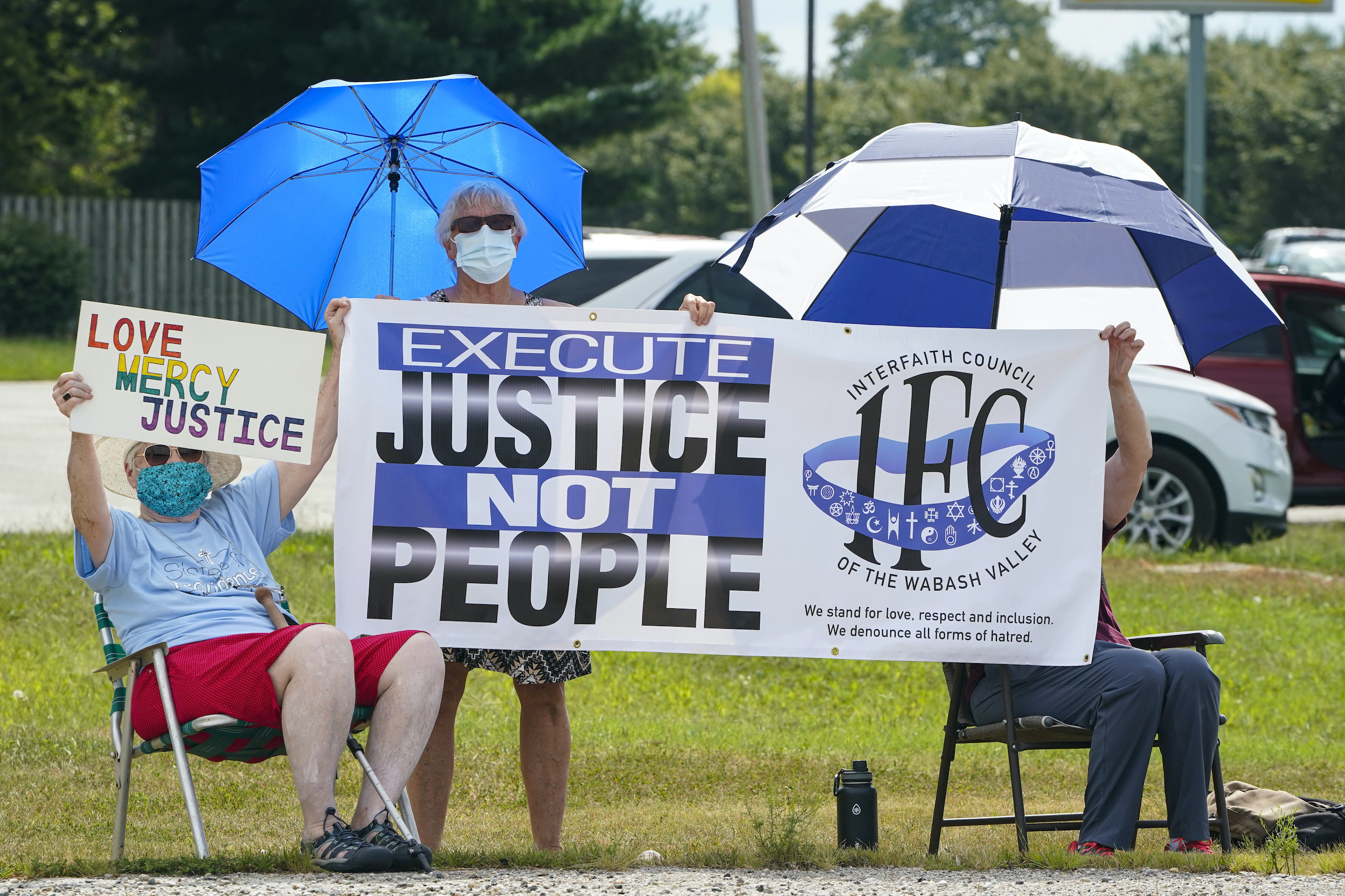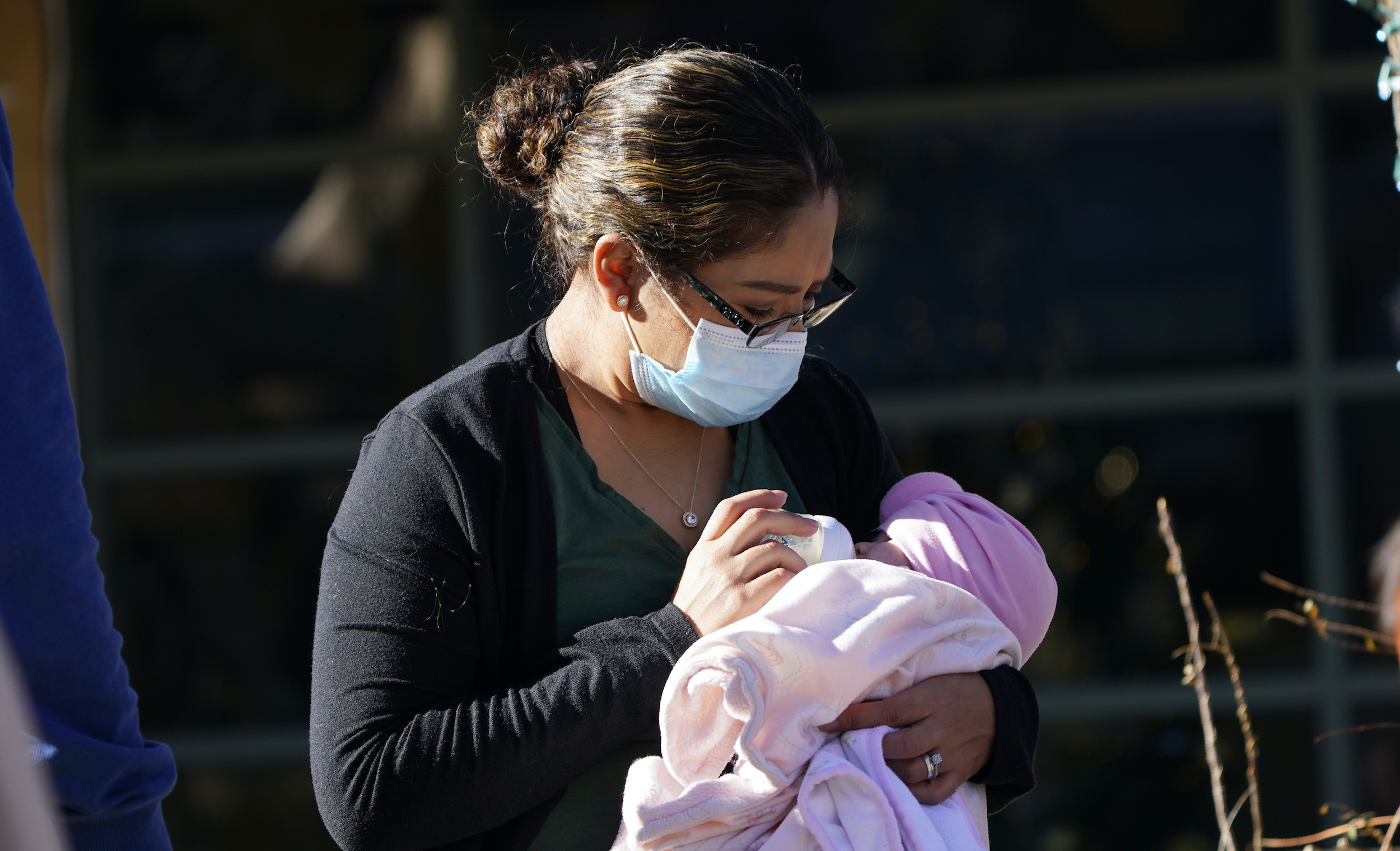 Covering COVID-19 is a daily Poynter briefing of story ideas about the coronavirus and other timely topics for journalists, written by senior faculty Al Tompkins. Sign up here to have it delivered to your inbox every weekday morning.
Covering COVID-19 is a daily Poynter briefing of story ideas about the coronavirus and other timely topics for journalists, written by senior faculty Al Tompkins. Sign up here to have it delivered to your inbox every weekday morning.
My friends, I am going to take a few days off this week and next. I will send you a newsletter next Monday and, if I see anything that might help you in the meantime, I will post links on my Twitter page (@atompkins). Since this will be the column for the week, I will include a few more items than normal. I hope it can help you through the holidays, which can be a tough time to be a reporter.
Here’s COVID-19 data the government has withheld and local journalists should explore
We all owe a “thank you” to Center for Public Integrity reporter Liz Essley Whyte, who has unearthed the data you need to report on the COVID-19 pandemic. Whyte writes:
The newly disclosed data reveal that nearly 900 out of 938 metropolitan areas and more than 2,000 out of 3,270 counties qualify as “sustained hotspots,” meaning they have “potentially higher risk for experiencing healthcare resource limitations.” It also showed that more than a dozen metro areas and nearly 50 counties saw a 500% or greater increase in deaths from the previous week.
Some of the information is similar to metrics the task force previously sent to governors in weekly reports. The documents, which the White House never made public, are now only available if states request them. The Center for Public Integrity has been collecting and publishing them.
The dataset contains some information not previously available on any state or federal dashboard: For example, the Kansas City metro area, which crosses state lines, saw a 14% decrease in new cases in recent weeks but a 22% increase in deaths. It also has information on college students, poverty levels, test turnaround times and much more — allowing researchers and the public to do deep-dive analyses to better understand where to focus public health efforts.
Clinical trials for vaccines for children to begin in January
Dr. Anthony Fauci says drug companies may start testing their vaccines on children next month. It can be tricky to dial in the right dose of a vaccine for children who, as you know, have shown a different reaction to the coronavirus than adults. Fauci says the trials will “start with children who are a bit older and then work our way down. We believe that within a few months, what I know we will be able to say, ‘the vaccine is safe and effective in you and we are anxious to get you vaccinated.’ So just hang in there a couple of more months and we will be in good shape.”
A key question in vaccinating children will not just be whether we have a drug that prevents infection, but also whether the vaccine can also prevent transmission, since children tend to show fewer symptoms but may be unknowing spreaders to adults.
With the trials starting in January, it is plausible that they could produce enough data to develop a vaccine dosage by the 2021 school year — if drug companies have the capacity to manufacture it.
The Moderna vaccine is approved for people 18 years and older while the Pfizer vaccine is approved for persons 16 and older.
Polyethylene glycol ‘might be’ the cause of allergic reactions to the COVID-19 vaccine
The Food and Drug Administration says it is investigating more reports of allergic reactions to the vaccine. Until last week, there was one report in the U.S. of an allergic reaction to the vaccine, in Alaska. But now, Peter Marks, director of the FDA’s Center for Biologics Evaluation and Research, says the FDA is looking at five reports of reactions in other states. The Hill includes this quote:
Marks said the FDA was not certain what caused the reactions but indicated a chemical called polyethylene glycol, which is present in the vaccines produced by Pfizer and BioNTech as well as by Moderna “could be the culprit.” He added that the reaction some people have experienced could be more common than once thought.
“We’ll obviously be monitoring very closely what’s going on. We’re working very closely with the CDC on these, and there have been meetings between the CDC and FDA pretty much every day this week making sure we’re keeping very close track of what’s going on,” he said.
A range of studies have revealed that polyethylene glycol can produce an allergic reaction in some patients and the FDA has known of such reactions for a while. In fact, there are records going back 15 years that the FDA has been tracking. Generally, polyethylene glycols, or PEGs, are used as “excipients,” or fillers, in medications. One of the many clinical studies of the hypersensitivity to PEGs was done at Vanderbilt Medical Center a couple of years ago (here is that really interesting report, including some photos). Researchers say it has been documented as a drug that can produce an allergic reaction in people who get a colonoscopy, since it is commonly used in the prep for that procedure.
Journalists, watch for this to hit the rumor mill. Polyethylene glycol is used in all sorts of things and has been for years. It is used in skin creams and toothpaste and even has some industrial uses. It is a fairly widely used laxative ingredient. It is an additive in industrial products to increase lubrication. It is an ingredient that is used to make giant soap bubbles in bubble bath solutions. In short, thousands of medications contain either PEGs or structurally similar “polysorbates.”
You can imagine the rumor mill saying the vaccine contains an additive that also is used in paint and industrial chemicals. It will be accurate but grossly out of context. The FDA’s approval of the COVID-19 vaccines includes a warning that people who have a history of allergic reactions should avoid the vaccine.
The challenge for journalists covering this angle of the vaccine story is to watch your tone and stick to facts.
The new ‘Vaccine Tracker’ map
Bloomberg will keep its new Vaccine Tracker constantly updated.
Of course, the map is reflective of population. It may become more useful if we see more populated states falling behind as a percentage of population, but even that might not be the whole story if a state has more seniors or if they have medical centers that have more health care workers, who get their shots first.
Study: The ‘be a protector’ message resonates
Researchers want to know what motivates people to wear a mask and get a vaccine. One message has risen above others. “Be a protector” motivates more people than “protect yourself.” Journalists, this might be useful for you to keep in mind.
The University of Michigan study says:
“When people think about what protective behaviors to follow, negative beliefs — the perception of external control — override positive beliefs. This means that simply repeating that people should follow public health guidelines is unlikely to be effective,” says study author Kenneth Resnicow, Ph.D., professor of health behavior and health education at the U-M School of Public Health and associate director of community outreach and engagement at the Rogel Cancer Center.
“However, our data show that when people consider being a protector for others, they approach risk differently. They are less likely to let their personal beliefs and politics discourage them from practicing COVID protection. Emphasizing the act of protecting others may help people who would otherwise be reluctant to practice COVID protection to feel independent and strong, rather than compliant or obedient,” he says.
Homeless for Christmas during a pandemic
As winter moves in, homeless shelters are struggling to control the coronavirus while serving people who need help. Around the country we are seeing reports of COVID-19 outbreaks in homeless shelters, including Ventura County, California; San Bento, Texas; Fort Collins, Colorado; Boise, Idaho; and San Diego, where the city put people who are homeless in a convention center.
Homeless shelters say they have far fewer volunteers because of the pandemic. TMZ polled shelters around the country and found:
Baltimore Outreach Services: This shelter only serves women and children, and they have a population of homeless that caps off at 40. They’re not accepting any volunteers for holiday food giveaways, but are accepting outside donations, food and otherwise. They’re also not taking in any new homeless clients needing housing, but have a waitlist.
Hope Street Shelter, Minneapolis: They serve homeless youths between 18-22 years of age, and while they say they will be taking new clients needing housing this holiday season — they are also not accepting volunteers due to COVID. They’re also keeping their services in-house and exclusively for the homeless population currently staying with them.
Light of Life Rescue Mission, Pittsburgh: This is one of the rare shelters that will take in and use outside of volunteers for Christmas and other food handout events. They plan to serve around 1,000 for Christmas, and will require volunteers to wear masks and distance. Unfortunately, they’re not taking in any new homeless clientele due to COVID.
Detroit Rescue Mission: They are not accepting any new homeless people to stay in their facility, but are committed to feeding anyone who needs a meal on Christmas. Social distancing will be required, and they hope to feed as many as 50 people.
St. Herman House, Cleveland: No outside volunteers allowed for Christmas, only in-house staff will work to distribute meals on Christmas day, while maintaining proper distancing. They expect to be able to serve up to 150 meals, all of which will be bagged this year. They’re also not taking in any new clients, but will start processing new apps soon.
Coalition for the Homeless, Washington D.C.: This shelter will not be allowing any new volunteers to help out with Christmas activities, whereas they have in the past.
Did Thanksgiving gatherings cause the current rise of cases in some states?
Epidemiologists warned us that if we did not stay home for Thanksgiving, we would see new records set for hospitalizations and deaths by Christmas. And here we are. But it is difficult and, to many, unconvincing to try to prove the Thanksgiving gatherings caused the current rise in hospitalizations and deaths because they are not happening the same way everywhere. The New York Times notes:
Three times as many more people in the United States are dying each day now than three months ago, and the number of new cases is six times what it was then.
It is hard to say whether the precipitous rise in cases in December is directly linked to gatherings and travel over Thanksgiving, “but certainly, there’s an association,” said Catherine L. Troisi, an infectious-disease epidemiologist at the University of Texas Health School of Public Health in Houston.
Anyone who was going to become ill from an infection caught over the holiday weekend would probably have done so by now, Dr. Troisi said. But they could also have spread it to others who are only now showing symptoms and being tested. “So, there’s a continuing ramification of these cases,” she said.
Journalists, we have to be careful not to say, without proof, that a holiday happened and then a lot more people turned up sick. They may be connected in some cases and not in others. There are so many ways that people might get the virus — from a Thanksgiving gathering, to going to the grocery store before the gathering to the bus depot or Black Friday shopping after the holiday.
The Times put the data into a chart that makes this easier to understand. The middle point in each line is Thanksgiving. In some states the third segment of the line goes down and in others it is sharply higher.
Will the rich be able to buy a vaccine?
The Los Angeles Times has a great story about rich people trying to buy access to vaccines. The story says bigshots are offering significant gifts to hospitals in exchange for the vaccine.
The virus is mutating, will the vaccine still protect against it?
Viruses mutate, it is expected, and the coronavirus is mutating right now. The main question of the moment is whether the vaccines will protect against a changing virus. Vaccine expert Dr. Paul Offit told me that he expects the vaccines will continue to protect against the changing virus. Scientists say they have detected about 20 variants of the virus so far. But British authorities say the variants may be more transmissible than previous versions. Viruses fight to survive, and one notion is that when you vaccinate millions of people in a short period, it will force the virus to change quickly.
One in five prisoners in the U.S. has or had COVID

Fencing surrounds the Denver Reception and Diagnostic Center operated by the Colorado Department of Corrections in this photograph taken Tuesday, Dec. 8, 2020, in east Denver. (AP Photo/David Zalubowski)
Unless we get a handle on the COVID-19 outbreak in jails and prisons, it will be exceedingly difficult to get control of it in the general population. And make no mistake, it is way out of control in prisons now. The rate behind bars is more than four times as high as the general population. In some states, more than half of prisoners have been infected, according to data collected by The Marshall Project and The Associated Press, who also report:
As the pandemic enters its tenth month—and as the first Americans begin to receive a long-awaited COVID-19 vaccine—at least 275,000 prisoners have been infected, more than 1,700 have died and the spread of the virus behind bars shows no sign of slowing. New cases in prisons this week reached their highest level since testing began in the spring, far outstripping previous peaks in April and August.
Nearly every prison system in the country has seen infection rates significantly higher than the communities around them. In facilities run by the federal Bureau of Prisons, one of every five prisoners has had coronavirus. Twenty-four state prison systems have had even higher rates.
You can download a spreadsheet of raw state-by-state data.
One way to reduce inflections in prisons and jails is to release nonviolent offenders and monitor them. But states have been very slow to respond to such calls:
In October, the National Academies of Science, Medicine, and Engineering released a report urging states to empty their prisons of anyone who was medically vulnerable, nearing the end of their sentence or of low risk to public safety.
But releases have been slow and uneven. In the first three months of the pandemic, more than 10,000 federal prisoners applied for compassionate release. Wardens denied or did not respond to almost all those requests, approving only 156 — less than 2 percent.
The federal government executed more prisoners than all the states combined in 2020

Protesters gather across from the federal prison complex in Terre Haute, Ind., Friday, Aug. 28, 2020. Keith Dwayne Nelson, who was convicted of kidnapping, raping and murdering a 10-year-old Kansas girl, was executed there shortly after the photo was taken. (AP Photo/Michael Conroy)
The U.S. government executed 10 people in 2020, which is more than all 50 states combined. Still, the number of death penalties issued this year and the number of executions are down to historic lows. Three more federal executions are scheduled to be carried out before President-elect Joe Biden’s inauguration on Jan. 20.
DeathPenaltyInfo.org reports there is a direct connection between the decline in capital crime sentences and the pandemic.
The historically low numbers of death sentences and executions were unquestionably affected by court closures and public health concerns related to the coronavirus. But even before the pandemic struck, the death sentences and executions in the first quarter of the year had put the United States on pace for a sixth consecutive year of 50 or fewer new death sentences and 30 or fewer executions. The execution numbers also were skewed by a rash of executions that marked the federal government’s death-penalty practices as an outlier, as for the first time in the history of the country, the federal government conducted more civilian executions than all of the states of the union combined.
(It) was part of a national trend away from capital punishment and against politicians who advocate for it.
At the end of the year, more states had abolished the death penalty or gone ten years without an execution, more counties had elected reform prosecutors who pledged never to seek the death penalty or to use it more sparingly; fewer new death sentences were imposed than in any prior year since the Supreme Court struck down U.S. death penalty laws in 1972; and despite a six-month spree of federal executions without parallel in the 20th or 21st centuries, fewer executions were carried out than in any year in nearly three decades.
Pawnshops in a pandemic
You might expect that pawnshops would be doing great business when the economy gets tight, but the truth is, business is not so hot. The exception has been gun sales, which have set new records in 2020.
Early in 2020, pawnshops said they sold a lot of computers, bikes and video game consoles. The stimulus checks watered business down as people had cash in their pockets and didn’t need pawnshop loans.
WXYZ-TV in Detroit talked to pawnshop owners, who say it has been quite a year:
“We’ve seen major changes in retail sales. Shortages and selling out of multiple items,” said Mark Aubrey, owner of Motor City Pawn Brokers. “It really is a good economic barometer.”
Owner Mark Aubrey says he’s seen a lot in 2020.
“It’s been a pretty wild year, as you could guess,” he said. “At the beginning of the pandemic, when families were adjusting to pandemic life, sales soared. Everything from laptops for homeschooling to handguns to drums.”
Musical instruments were a big hit. Obviously, electronics, televisions and game systems. People were stuck at home.
Aubrey says with stimulus money and extra federal unemployment cash, luxury handbags and jewelry were hot items too. But people were also coming in to pay off loans used to bridge the gap when their jobs went away.
Happy Solstice-the Christmas Star

Saturn, top, and Jupiter, below, are framed between the twin steeples of St. Joseph Catholic Church Saturday, Dec. 19, 2020 in Topeka, Kan. (AP Photo/Charlie Riedel)
Today is the shortest day of the year and the longest night. It (perhaps symbolically) means that starting tomorrow, light comes a little earlier each day.
At the same time, Jupiter and Saturn will appear closer in our sky than they have in 800 years, mimicking the “Christmas star.”
The last time Jupiter and Saturn appeared so close was July 16, 1623, back when Galileo was still alive, a little more than a decade after he first used a telescope to discover Jupiter’s four largest moons that now collectively bear his name. The odds are low, however, that Galileo or anyone else on Earth managed to witness that great conjunction, which was virtually impossible to see because of its apparent position near the sun. The last great conjunction to appear as close and as visible as the upcoming one occurred on March 4, 1226. “For perspective, Genghis Khan was still roaming Asia then,” says astronomer Patrick Hartigan at Rice University in Houston.
You can see the event tonight with binoculars and telescopes, but we’ll also be able to watch it with the naked eye. To do that:
Find a spot where you can watch the sunset with a clear horizon in front of you, free of trees or buildings.
In the hour or so after nightfall, first Jupiter will appear in the western sky, and then Saturn, both shining dots distinguishable from the stars by the fact they do not twinkle. “They will likely be visible even with light pollution — Jupiter is pretty bright.”
What’s this got to do with the Christmas Star story? Scientific American explains:
Great conjunctions have at times drawn scientists to speculate over their possible links with major events. For instance, Johannes Kepler investigated whether the Star of Bethlehem, which in the nativity story of the Gospel of Matthew guided the Three Wise Men to Christ’s birth, was a great conjunction, calculating that one did occur in 7 B.C. “Often astronomers like to look through stories from ancient times and see if there might be an astronomical phenomenon behind something captivating that people saw,” Jackie Faherty at the American Museum of Natural History in New York says. (Hartigan notes that ancient great conjunction was not an especially close or remarkable one.)
What we have learned about dating in a pandemic
A new Morning Brew/Harris poll found:
Of respondents who had dated online before, more than two in five (42%) say they’re doing so more now compared to before the pandemic.
Apparently, quarantine can be the perfect time for romance — though not for everyone. 59% of respondents say they will be dating less once the pandemic is over, but 41% say they will date more.
We’re similarly polarized on the topic of dating FOMO. 44% say they feel a great deal/some anxiety about losing time to pursue dating during the pandemic, but 56% feel none/not much anxiety about it.
The ideal COVID-safe first date would involve meeting at an outdoor location (39%), video chatting virtually (35%), and staying socially distant with masks on (31%).
“The dating game in COVID is all screen and no scene,” said Harris Poll CEO John Gerzema. “While 40% are using dating apps more, 44% have anxiety over lost time dating in real life. Look for a dating boom when the vaccines reach the singles as almost half plan to date more once the pandemic is over.”
Will 2021 be a ‘baby bust?’

A woman feeds a baby while waiting for entry at the Denver Zoo Monday, Dec. 7, 2020, in east Denver. (AP Photo/David Zalubowski)
Brookings researchers estimate 300,000 fewer births in the U.S. next year.
It is not unusual to see a drop in births when times get tough. Brookings predicted the trend in early summer and now says the data is holding together:
A survey conducted by the Guttmacher Institute reveals that 34 percent of American women have either delayed their plans to have a child or reduced the number of children they expect to have as a result of the pandemic. A different survey shows that European women similarly report that they plan to postpone giving birth or have fewer children.
Levels of sexual activity have also fallen. In one survey (conducted by the Kinsey Institute), almost half of adults surveyed report a decline in their sex lives. In another (conducted by the University of Indiana), those with young children and, particularly, those with school-age children report the largest declines in intercourse.
You can also look at Google Trends to see what people are searching for as an indication of what is interesting to them at the moment.
The authors report that searches for pregnancy-related terms, such as “ClearBlue” (a pregnancy test), “ultrasound,” and “morning sickness” have fallen since the pandemic began. Based on the reduced searches for pregnancy-related terms, the authors of that study forecast a reduction of births on the order of 15 percent, an even larger drop than what we forecasted.
I thought this passage from Brookings was really interesting:
Yet there are reasons to believe that our July prediction might understate the impact on fertility. Ongoing school closures are putting tremendous strain on families that may reduce their willingness to have more children. Restrictions on public gatherings and social encounters might mean fewer new couplings that could lead to pregnancies, intended or otherwise. The extended nature of this crisis also is likely to create large structural changes in the economy; a sizable share of the jobs lost will be permanent. The longer the duration of the income loss that workers expect, the more likely it is that delayed births will never happen. We did not attempt to make any predictions based on these additional factors because we had no previous context or data from which to draw empirical conclusions.
We will know for sure in a few months, Brookings says.
Does your pen fight bacteria or viruses?
My friend Jim Sweeney dropped me a note saying he had recently bought some office supplies and noticed the Bic Clic Stic pens claim they haVE a special ingredient. The package and website claim:
The iconic Clic Stic Ball Pen now with PrevaGuard contains built in protection on the pen to suppress bacteria growth.
BIC PrevaGuardClic Stic contains an EPA registered antimicrobial agent that is molded directly into the pen. This helps protect the pen by suppressing the growth of bacteria, molds, mildew and fungi, especially in high moisture environments.
Contains antimicrobial agent which enhances pen’s freshness, fights undesired odors, staining and pen degradation.
The antimicrobial agent should last the life of the plastic, unless the plastic is destroyed.
Since Jim is an inquisitive journalist and a reader of this column, he dropped me a note essentially asking, “What the heck is this?”
It turns out that antimicrobial and antibacterial materials are a real thing with pen companies. Pens.com explains:
Antibacterial products are made with active ingredients like silver, which is embedded in the surface of the product. These ingredients create an environment that bacteria can’t live on.
Antimicrobial pens and products will also prevent the growth of bacteria, but they go even further, preventing the growth of microorganisms like fungi, mold, and some viruses. With the use of active ingredients like silver or zinc within the product’s surface, antimicrobial products can offer longer lasting protection than antibacterial products.
The site also explains that using antimicrobial materials makes pens more “shareable.”
The website penvibe, another pen insider page, adds more insight:
An antibacterial pen suppresses the growth and survival of bacteria on its surface. Thus preventing contamination been passed on from person to person.
Antibacterial pens are commonplace in the food manufacturing industry but they are also ideal for use in places where there is a higher risk of cross-infection.
If a pen is purely an antibacterial pen, then it will offer no protection against viruses. If it is manufactured with antimicrobial technology, then it may offer some protection against influenzas.
But can any pen claim to have protection against the coronavirus? The answer is that there is no proof, according to two of the biggest companies that make this technology, BioCote and SteriTouch. So they cannot make that claim.
There you go — you learned something today. I will see you in a week here and on Twitter as needed.
We’ll be back next Monday with a new edition of Covering COVID-19. Sign up here to get it delivered right to your inbox.












